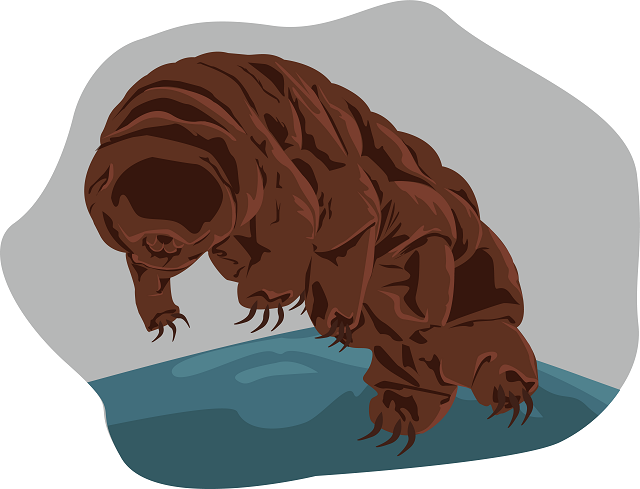Here are the Most Searched Google Question and Answers about Tardigrades! What do tardigrades eat on the moon? Can tardigrades die? Are Tardigrades dangerous?
Are Tardigrades dangerous?
Tardigrades are not dangerous to humans. There have been no species of Tardigrade found yet, that is involved in spreading diseases.
Where do tardigrades live?
Tardigrades live in moist regions like in moss, lichen, moist soil or leaf litter. They can be found in freshwater, or marine environments as well as in semiaquatic terrestrial regions.
Are tardigrades immortal?
Tardigrades are not immortal. However, they can transform themselves into a ‘tun’ state wherein they survive in a state of cryptobiosis, with 0.01% of their metabolic activity for about 100 years.
What is the life span of tardigrades/ How long do tardigrades live?
If Tardigrades do not go into their tun state, and function with normal metabolic rate, the life span can be anywhere between 3 to 4 months or 2.5 years, depending on the species.
Can tardigrades die?
Yes, Tardigrades die after they have completed their lifespan. The next generation of Tardigrades is produced through sexual or asexual reproduction.
Read about the The Secret Lives of Tardigrades
What is the size of Tardigrades?
Tardigrades are microscopic. They can be anywhere between 0.05 mm and 1.2 mm.
Do Tardigrades have eyes?
Tardigrades do not have well-developed eyes. Some species have primitive eyes whereas other species have eyespots to detect light.
What do Tardigrades eat?
Tardigrades eat the fluid contents of algae, moss, and lichen by piercing their cell wall. Some Tardigrades may eat whole organisms such as rotifers or show cannibalism by eating other tardigrades.
What do tardigrades eat on the moon?
If there are tardigrades on the moon, they would be in the ‘tun’ state and not take part in metabolic activities such as eating.
Get stories like this one in your inbox: Sign up for our email and Subscribe Now To Get The Most Anticipated Edition Of Starry Stories Magazine For Free.
Read more Articles from Life Sciences
1. Read about CRISPR Gene Editing Explained for Kids
2. Read about the Did You Just Spot a Cheetah a Leopard and a Jaguar
3. Read about the The Secret Lives of Tardigrades
4. Read about the Chlorophyll and Haemoglobin – An Unlikely Connection
5. Read about the What is the True Colour of the Coronavirus?
6. Read about Why Do Fish Not Freeze in Cold Water?
7. Read the Most Searched Google Question and Answers about Tardigrades!
8. Read the Top 10 Interesting Facts about Tardigrades
About Author
Saunri Dhodi Lobo is pursuing M.Sc in Life Sciences with specialization in Neurobiology. Her interests include writing poetry, going for nature walks and swimming. Currently she is involved in research on Alzheimer’s Disease in fruit flies.
Read all Articles by Saunri Dhodi Lobo
Illustrations Credits
Guriya Kumari is an illustrator at Starry Stories and is currently pursuing her bachelor’s degree course in political science. She is passionate about art and wants to acquire new trends in the art field along with personality advancement. Her goal is to create a unique artwork style of her own.
Instagram: https://instagram.com/guriya.k.999?igshid=1sp5al7csgz0v
Behance: https://www.behance.net/gkumari
Dribble: https://dribbble.com/guriya

